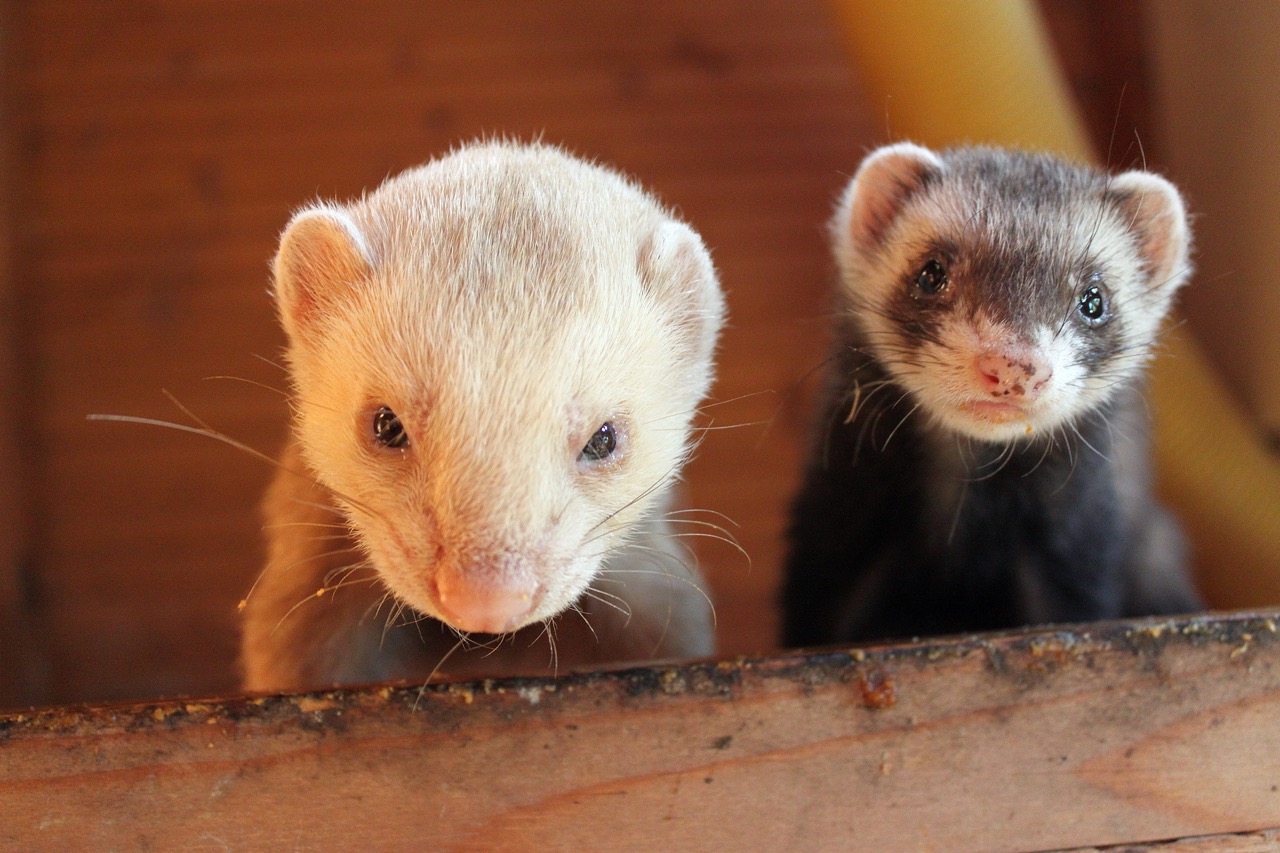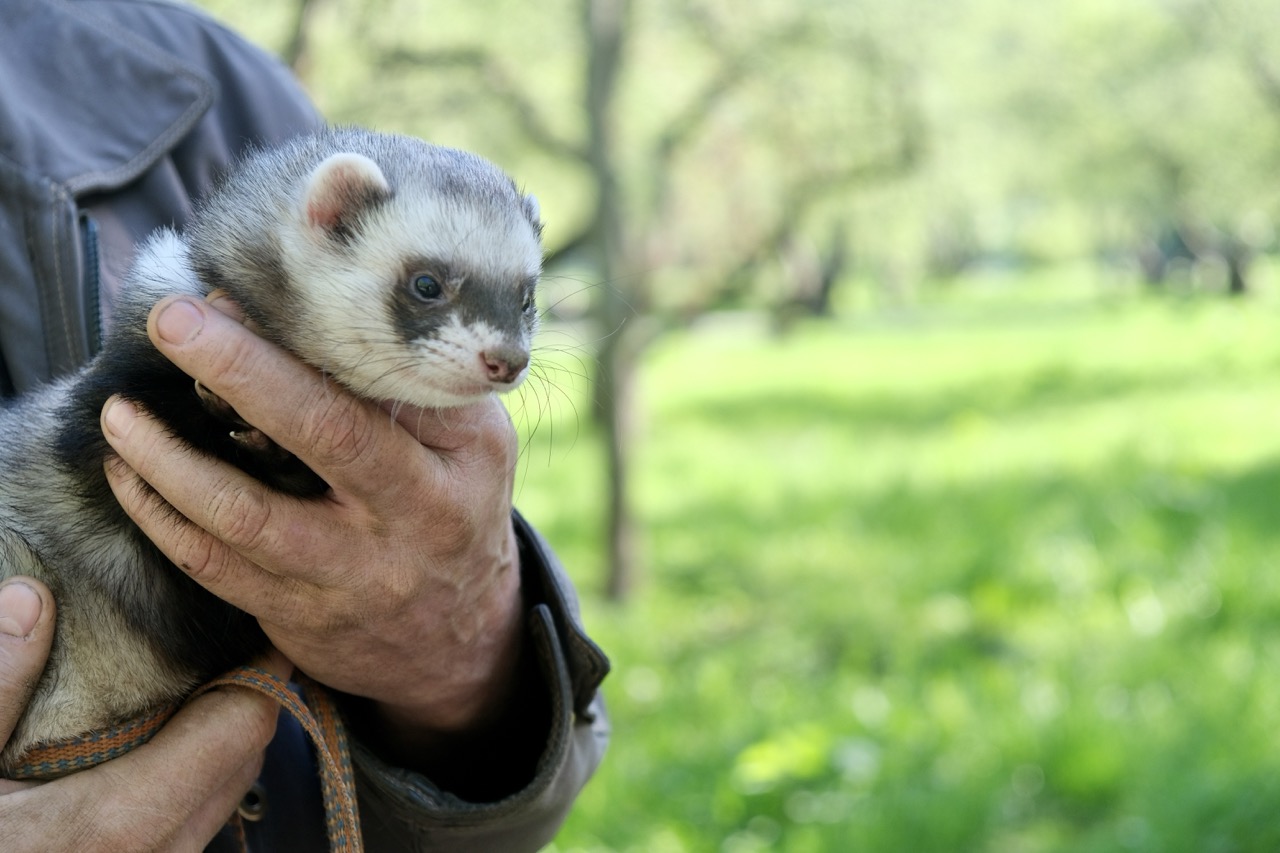Ferrets are fascinating companions, known for their playful nature and spirited antics. However, their behavior is deeply intertwined with their biological cycles, which can significantly influence their mood, energy levels, and overall temperament. Understanding these cycles is essential for ferret owners who wish to create a harmonious living environment and respond appropriately to their pets’ behavioral cues. This article delves into the biological cycles of ferrets and how they affect their behavior, with a focus on hormonal changes, seasonal variations, and management strategies.
Understanding Ferret Biological Cycles and Behavior
Ferrets have unique biological cycles that are critical to their well-being. These cycles encompass various physiological processes, including reproductive hormones, metabolism, and daily activity levels. Ferrets are seasonal breeders, meaning their reproductive cycles are affected by the changes in daylight hours, which can influence their behavior significantly. Female ferrets, or jills, experience estrous cycles that can lead to notable changes in their demeanor during mating season. Owners may observe increased restlessness, vocalization, and even aggression during these times.
In addition to reproductive cycles, ferrets also exhibit circadian rhythms that dictate their daily activities. As crepuscular animals, ferrets are most active during dawn and dusk, aligning their behavior with the natural rhythms of their environment. Understanding this aspect of ferret behavior helps in structuring their playtime, feeding schedules, and rest periods, ensuring that they can thrive in their home environment. By recognizing these biological cycles, owners can better anticipate their ferrets’ needs, leading to more effective care and an enriched life for their pets.
Moreover, it’s important to consider that individual ferrets may exhibit variations in their biological cycles based on factors like age, health, and environment. Young ferrets may have different activity patterns compared to older ones, and those that are spayed or neutered may also show altered behavior. Keeping a close eye on these variations allows owners to adjust their care routines accordingly, fostering a deeper bond and understanding between them and their ferret.
The Impact of Hormonal Changes on Ferret Behavior
Hormonal changes are a significant factor affecting ferret behavior, particularly during the breeding season. For female ferrets, the presence of estrogen during their estrous cycles can lead to heightened sensitivities, increased aggression, and a more dominant demeanor. In contrast, male ferrets may exhibit territorial behaviors or increased competitiveness, especially when competing for the attention of females. This hormonal influence can create challenges for owners, who must navigate the complexities of their pets’ behaviors during these periods.
The interplay of hormones also affects ferrets’ emotional states. Fluctuations in hormone levels can lead to mood swings, causing ferrets to alternate between high-energy playfulness and periods of lethargy or withdrawal. Awareness of these hormonal influences can enable owners to provide appropriate enrichment and comfort during times of behavioral change. For example, when a jill is in heat, ensuring she has ample outlets for her energy, such as toys or interactive play, can help mitigate some of the behavioral challenges associated with her hormonal state.
Moreover, hormonal changes are not limited to the breeding period. Stress and environmental changes, such as relocation or the introduction of new pets, can also impact hormone levels and, consequently, behavior. Understanding this relationship allows owners to create a stable environment that minimizes stressors and promotes a balanced hormonal state, contributing to more consistent and predictable behavior from their ferrets.
Seasonal Variations: How They Influence Ferret Activity
Ferrets are sensitive to seasonal changes, which can lead to fluctuations in their behavior and activity levels. During the spring and summer months, increased daylight hours often stimulate higher energy levels in ferrets, leading to more vigorous play and exploration. Owners may notice their pets becoming more curious and adventurous, which can prompt an increase in interactive playtime. This heightened activity can be beneficial for physical health but may require owners to adapt their routines to accommodate their ferrets’ energetic needs.
Conversely, during autumn and winter, ferrets may display a more subdued demeanor. Shorter daylight hours can lead to decreased activity levels, as these animals instinctively respond to changes in their environment. Owners might find that their ferrets prefer to sleep or snuggle more during this time, which can be mistaken for lethargy. Understanding these seasonal variations helps owners prevent unnecessary worry and promote a comfortable environment that supports their ferrets’ natural instincts.
Additionally, seasonal changes can also affect ferrets’ social behavior. In the spring, social interactions may increase, as ferrets become more playful and eager to engage with their human companions. However, during the quieter winter months, ferrets may become more introverted, preferring solitude or close contact with their owners. By recognizing these seasonal behaviors, owners can tailor their interactions and playtime to align with their ferrets’ current state of mind, fostering a deeper understanding and connection between pet and owner.
Managing Behavior Through Awareness of Biological Rhythms
Understanding ferrets’ biological rhythms is essential for managing their behavior effectively. By aligning care routines with their natural cycles, owners can create a supportive environment that encourages positive behaviors. For instance, scheduling playtime during the ferret’s peak activity hours—early morning and late evening—ensures that they receive the interaction and stimulation they crave. This alignment can lead to decreased behavioral issues, such as biting or excessive vocalization, as ferrets feel more engaged and satisfied with their daily activities.
Moreover, providing a consistent routine can help regulate ferrets’ hormonal fluctuations. Regular feeding times, play sessions, and quiet periods can create a predictable environment that enhances their sense of security. During the breeding season, owners can implement additional strategies, such as providing plenty of exercise and mental enrichment, to help manage the heightened energy levels and potential behavioral challenges associated with hormonal changes. This approach not only alleviates stress for the ferret but also for the owner, as they become more adept at anticipating and responding to their pet’s needs.
Lastly, it is crucial for owners to remain observant and responsive to their ferret’s individual behaviors. Understanding that each ferret is unique and may respond differently to biological cycles allows for tailored care. Keeping a journal to track changes in behavior related to hormonal cycles and seasonal influences can provide valuable insights into a specific ferret’s needs, enabling owners to adjust their care and interactions accordingly. By fostering a deeper awareness of these biological rhythms, owners can enhance their ferrets’ quality of life and strengthen their companionship.
In summary, ferrets’ biological cycles play a pivotal role in shaping their behaviors and emotional states. By understanding the impact of hormonal changes and seasonal variations, ferret owners can better manage their pets’ behavior and create an enriching environment tailored to their needs. Ultimately, this knowledge not only benefits the ferrets but also enhances the bond between pet and owner, enabling a fulfilling and joyful companionship. Awareness and understanding of these biological rhythms are essential steps toward responsible and compassionate ferret care.










